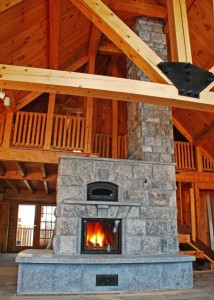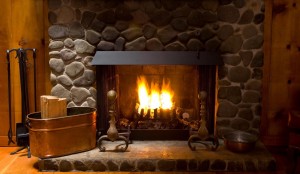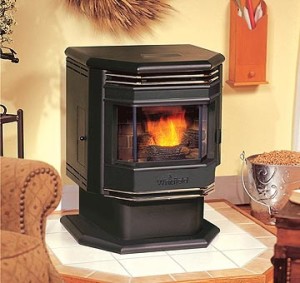As the frigid months of winter inevitably approach, you might want to consider alternative ways to keep your home warm and comfortable. After all, while traditional furnaces can do an excellent job of heating a home, high-energy costs also make it quite expensive. Fortunately, there are alternatives to heating your home that can be more energy efficient and save you money all winter long. Our overview of some wood heating alternative options will help get pointed in the right direction.
Fireplaces and Wood Burning Stoves
Having a fireplace in the home can be a great option when it comes to alternative heating. Wood burning fireplaces tend to be popular because all that is needed to heat one is a pile of dry firewood and a match. Depending on how often they are used, a wood-burning fireplace can cost $50-$250 per month. Even though this article is about wood burning alternatives for heating, we can’t go without mentioning that you can also run a fireplace with natural gas. There are some advantages to gas fireplaces; they’re easier to control, burn very clean, require less maintenance and you can save even more on your energy bills due to the recent price declines in the cost of natural gas. Both offer a great heating option for heating sections of your home or for smaller homes, and are visually appealing in any space.
Pellet Stoves
These are similar to fireplaces in the sense that they typically provide visual appeal while also adding warmth to your home. There are two types: freestanding and built-in. A freestanding stove can be placed just about anywhere along an empty wall space and can cost from $500 to $4,000. Instead of burning wood logs like a fireplace, wood or sawdust pellets can be shoveled into the stove or delivered through a hopper to keep the fire burning. So while the initial cost of such a stove is a bit higher, this typically pays for itself in no time with energy bill savings. According to the Pellet Fuels Institute, the average cost for operating a pellet stove through the winter season is $825. Additional benefits of pellets are that they burn much cleaner than oil and are considered a biofuel, so the may qualify for government rebates in some states.
Masonry Heaters

Masonry Heaters store heat in the structure built around the fireplace and chimney
At first glance, a masonry heater may look just like any other fireplace. However, these have one distinct feature that sets them apart greatly from a traditional fireplace or even a wood burning stove: a masonry heater is different in that a significant masonry structure is built around the fireplace and the chimney. This allows them to store large amounts of heat in what is known as a masonry thermal mass. A masonry heater, then, is the most energy efficient option of the three because it can store heat generated by burning wood. These heaters can also gradually release the built-up heat to maintain a steady and comfortable temperature within your home. The only real drawback to a masonry heater is that the initial investment is rather high. Even the less expensive heaters start at around $3,000 and that is not including installation costs. Still, this can be a great long-term investment for any homeowner looking to reduce heating costs. Annual costs for operation of masonry heaters runs from $500-$1000.
Overall, there are a number of wood alternatives when it comes to home heating and saving energy. Consider one of the above options, if you are interested in reducing your utility bills and running a high efficiency form of home heating.
You’ll also like:
Stop Breaking your Back with those Heavy AC Units
How Do Solar Hot Water Heaters Work?
Sit Back, Relax and Save on Energy the Easy Way
Want more interesting articles, reviews and insights like this one?
Sign-up for our weekly updates, below:



Leave a Reply